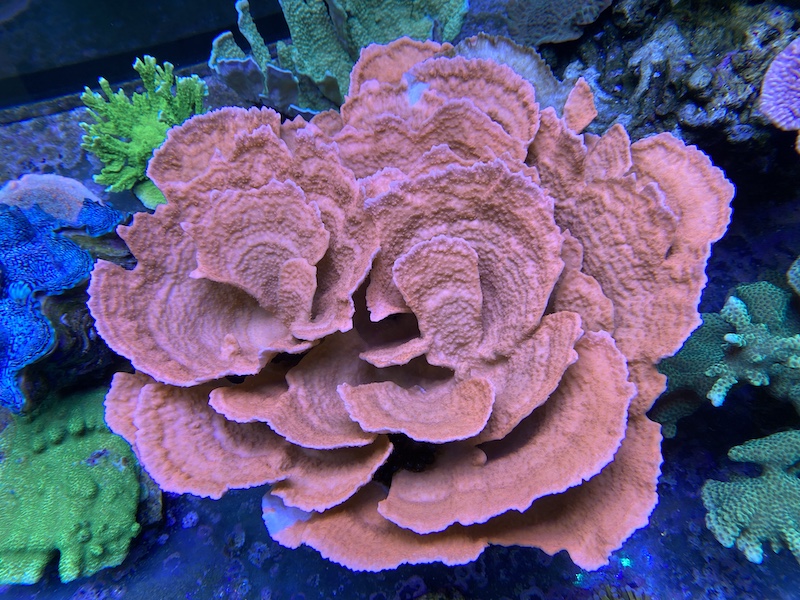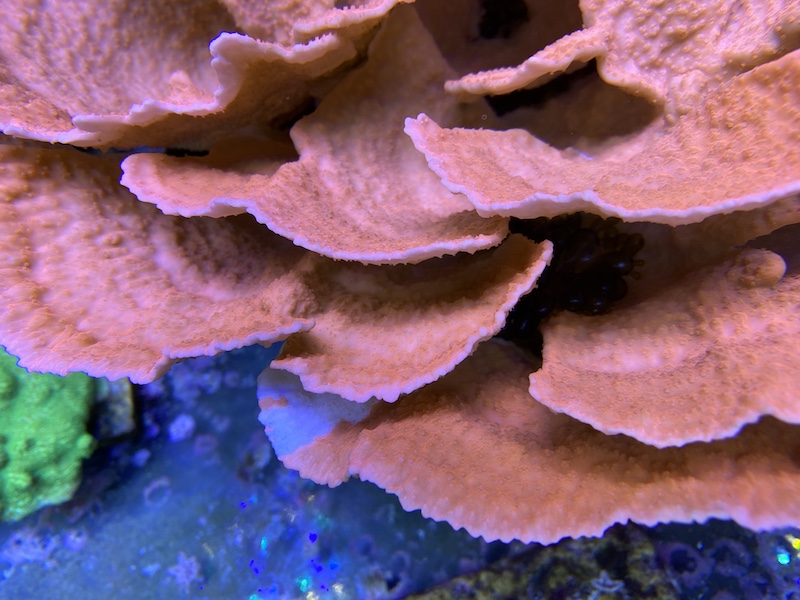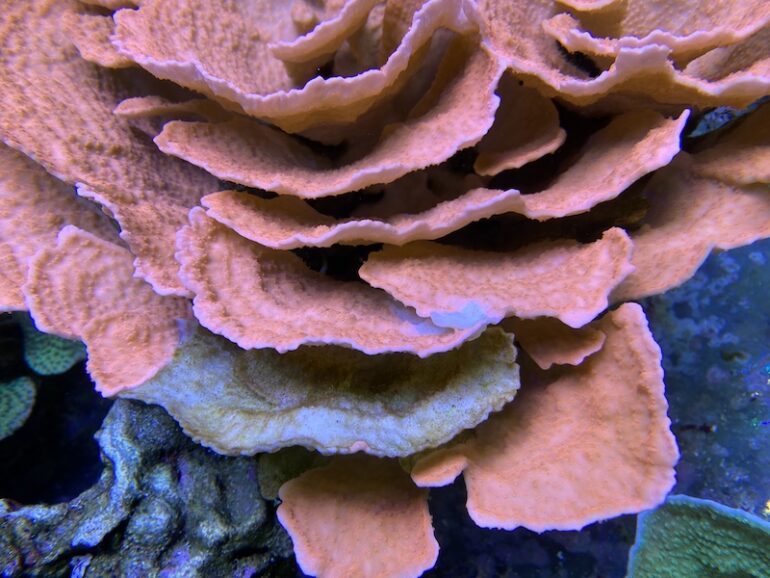SPS corals like Montipora, Acropora and many others are some of the most diverse, colorful and interesting stony corals we can keep and grow in aquariums. Along with their fast growth and incomparable colors comes some risk because their fast metabolism can sometimes lead to unwanted problems such as tissue loss.
Rapid and slow tissue necrosis (RTN & STN) are sometimes confounded with tissue loss – ‘necrosis’ has been widely used in the reef aquarium hobby to describe any kind of tissue loss but this isn’t always accurate. We would characterize actual necrosis as the tissue dying and becoming brown, sometimes jelly-like from infection, but some tissue loss is more benign, being very localized and not necessarily predisposed to spread.

We don’t have any good answers as to what causes various types of necrosis, or tissue loss, and neither does anyone else, but it’s generally attributed to water quality, water chemistry, stress, or sometimes it can be linked to introducing new corals or invertebrates. The goal of this article is not to solve or address any of these conditions, but just to bring light to the fact that sometimes, corals simply loose a bit of tissue and it’s not mandatory that you find out the cause.
In our case, we have a large colony of orange Montipora ‘capricornis’ that grows very fast, very colorful, and every few months it seems to experience a little bit of localized tissue loss. Without doing anything to the tank, any changes, or any interruption in the dosing (that we can tell), some SPS corals just experience this from time to time. It’s never great to discover patches of bare white skeleton in your aquarium display, but it’s also not necessarily the beginning of something major or dramatic.

There’s probably something causing these periodic episodes of lost tissue, even if we can’t or haven’t yet been able to place our finger on it. But in this particular colony since it grows fast enough, it usually only takes a couple of weeks before the Montipora has made up for or grown over the now bare patches of skeleton.

Of course you want to be mindful of any tissue loss or abnormal coral death when they occur, but if only one out of dozens or a hundred corals is suffering in this way, don’t go changing everything about your tank if all the other corals are doing fine or thriving. Sometimes corals die, and we don’t always know the exact cause, but this is also true on a natural coral reef where corals are competing with each other, resisting predation and everything the environment throws at them.
It’s already a minor miracle of coral husbandry that we succeed in growing them at all and today many of coral strains have been cultured for dozens of years and while they grow fast and large, sometimes they are going to experience minor setbacks no matter what you do.



